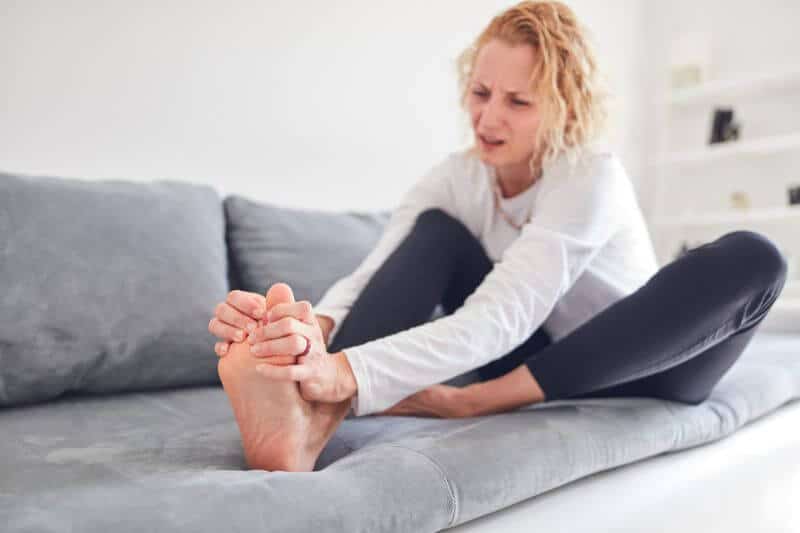What Is Capsulitis?
Joints are kept in place and supported by connective tissues called ligaments. The entire joint is enclosed with more tissue, which creates a bag or ‘capsule’. The capsule also contains synovial fluid to protect and cushion bones, and ease movement.
In certain instances, these ligaments can become inflamed – a painful condition known as capsulitis. This can occur in any joint but is most common in the toes and the shoulders.
Capsulitis shouldn’t be ignored because it doesn’t cure itself and will undoubtedly get worse. Without treatment, the ligaments will eventually weaken and, in time, this causes the toes to bend upwards and dislocate.
How Is Capsulitis Caused?
Anyone can suffer from capsulitis but there are certain circumstances that make it more likely. Any situation that places excessive pressure on the ball of the foot can lead to capsulitis.
- Any poorly fitting footwear that pushes the feet into the wrong position.
- High heels in particular as they push the feet into the balls.
- A deformity that alters the shape and movement of the foot.
- A severe bunion restricts your foot and causes pressure.
- Tight calf muscles or muscle imbalance that affects movement.
- Any biomechanical issue that affects your gait and posture.
- Conditions that easily lead to inflammation such as osteoarthritis or rheumatoid arthritis.
What Are the Symptoms?
Capsulitis can affect any toe but is most likely to occur in the second toe. Common symptoms include:
- Redness and swelling around the joint capsule.
- Pain in the ball of the foot, especially under the joint.
- Pain when walking – the feeling of having a stone in your shoe.
- Shooting pains or numbness.
- Tingling and burning sensations.
If left untreated, painful calluses can develop underneath the toes and as the ligaments become weaker the affected toe will drift upwards and sideways. This makes any footwear uncomfortable and will probably require surgery to rectify, so don’t wait until you get to this stage.
How to Manage the Pain
If possible, rest the foot and apply an ice pack for a few minutes to reduce the swelling. Make sure to wrap the pack in a clean tea towel rather than applying it directly to the skin. Repeat this several times a day.
Anti-inflammatory medication may also help and over-the-counter options like Ibuprofen are available (always check with the pharmacist that this is right for you). Alternatively, your doctor can prescribe something appropriate. Cortisone injections can be helpful for some people.
Shoes and Orthotics
Without the right footwear, pain management isn’t going to get you very far. Properly fitting shoes are essential, as they cushion and support without squashing or pinching.
It’s particularly important to lessen the pressure on the ball of the foot and this is where custom- made orthotics can help tremendously. They provide padding to protect and ease sensitive areas, and redistribute weight away from painful spots. Orthotics also help correct postural issues which can place unwanted pressure on the balls of your feet and adversely affect your body alignment in general.
Reassuring Advice at Feet By Pody
If you have any of the symptoms mentioned, a podiatrist should be your first stop. We can advise you on pain relief and appropriate footwear, provide custom-made orthotics, help with stretching exercises for tight muscles, and generally guide you on the road to better foot health.
And don’t forget, we’re not just here for specific issues. It’s always best to prevent problems from arising in the first place, so why not pop in for a general check-up?

